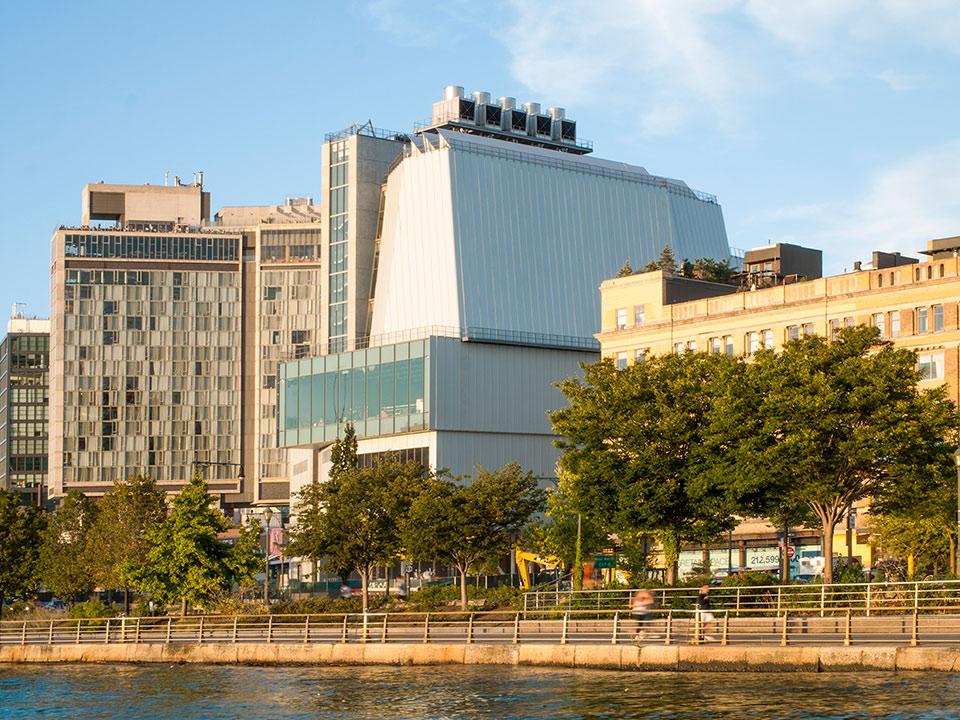
Tomorrow, the long-awaited (seven years in the making) Whitney Museum of American Art finally reopens in its new digs downtown, at the south end of the High Line in New York. Unlike its former home, which was nestled in the Upper East Side on Madison Avenue, this new space lies on the Western edge of Manhattan, with gorgeous views overlooking the Hudson River. Here, we’ve put together a quick primer on everything you need to know about this inaugural moment — so you can talk shop, confidently, whether you’re at the morning-after watercooler or a gala-worthy art party.
The new building covers nine floors and 220,000 square feet, and weighs 28,000 tons. The cost? A whopping $422 million.
Behind the Design
While Hungarian expat Marcel Breuer designed the Whitney’s old space on Madison Avenue, this shiny new building comes from Italian architect Renzo Piano, who’s no stranger to art destinations. He’s worked on 24 museums, including Paris’ Centre Pompidou and The Menil Collection in Houston.
Size Matters
The new location is a serious upgrade in space. For example, whereas the former building only housed its permanent collection on the fifth floor — leaving the remaining holdings in storage — this downtown outpost has 20,500 square feet on two floors dedicated to that, almost double the previously allocated space. Among the finds previously tucked away: works by Ellsworth Kelly and Matthew Barney. Then there are the four outdoor terraces, the theater, the public plaza…
Green with… No, Not Envy
The Whitney is pursuing a LEED Gold rating from the U.S. Green Building Council, which would make it the city’s first such certified art museum. The heartwood pine flooring, moreover, is reclaimed from old factories, including a shuttered Maidenform bra factory in New Jersey.
Art, Art Everywhere
Yes, even in the elevators. They feature commissioned artwork by the late Richard Artschwager, who passed shortly after completing the designs, making Six in Four, as the elevator installations are called, his last major work. It taps into the interior themes the American artist targeted again and again in his career — for instance, walking into one elevator will feel like you’re standing under a table whereas riding in another will feel like you’re in a big floating woven basket.
America Is Hard to See, the inaugural exhibit, features nearly 650 works dating back to 1900 — all culled from the Whitney’s permanent collection. Named after a Robert Frost poem, the show focuses on the themes and movements of art in the U.S. throughout those years. There are works from a whole Who’s Who roster of artists — Ansel Adams, Roy Lichtenstein, Louise Bourgeois, John Baldessari, Jasper Johns, Isamu Noguchi, Eva Hesse and so on.
Coming Home
As much as the Whitney has been connected to the upper stretches of Manhattan — along with fellow major New York museums, the Guggenheim, the MoMA and the Met — it actually started out downtown, making this move a homecoming of sorts. The original locale was on Eighth Street in the Village.
And Speaking of Origins
There’s a female entrepreneur behind this all. The museum was founded by one Gertrude Vanderbilt Whitney in 1931. An art patron and an artist herself, she amassed a substantial collection of American art, which she then tried to gift to the Metropolitan Museum of Art. Its director dismissed her and her collection — “What will we do with them, dear lady? We have a cellar full of those things already,” he reportedly told her — so Whitney left in a huff and decided to open her own museum.
Empire State of Mind
The Whitney Museum teams up with the Empire State Building on a light show taking place tomorrow, beginning at 8 PM ET. Celebrating both the museum’s relocation and the 84th anniversary of the building beloved by tourists and giant apes alike, the event will recreate a number of artworks, LED-style, on the latter — from Andy Warhol’s Flowers (1970) and Edward Hopper’s Railroad Sunset (1929) to Mark Rothko, Untitled (Blue, Yellow, Green on Red) (1954) and Barbara Kruger’s We Don’t Need Another Hero (1987).
More to explore in Culture
-
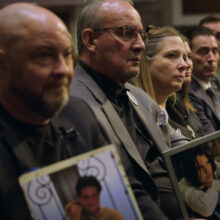 Culture
4.21.25
Word of Mouth: ‘Can’t Look Away’
Culture
4.21.25
Word of Mouth: ‘Can’t Look Away’
-
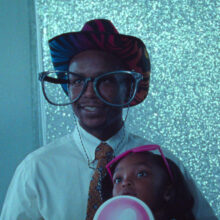 Culture
10.24.24
Word of Mouth: ‘Daughters’ on Netflix
Culture
10.24.24
Word of Mouth: ‘Daughters’ on Netflix
-
 Culture
10.24.24
Financial Literacy for Kids? It’s Priceless.
Culture
10.24.24
Financial Literacy for Kids? It’s Priceless.
-
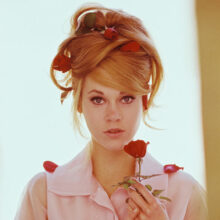 Culture
11.22.23
What’s Your Sign? Sagittarius
Culture
11.22.23
What’s Your Sign? Sagittarius
-
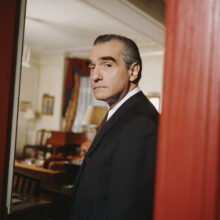 Culture
10.19.23
What’s Your Sign? Scorpio
Culture
10.19.23
What’s Your Sign? Scorpio
